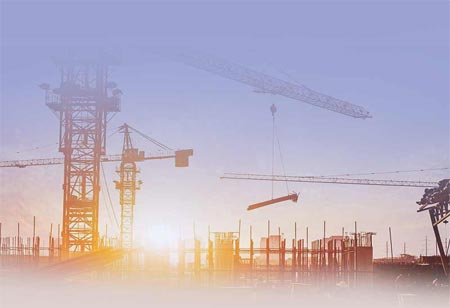Thank you for Subscribing to Construction Business Review Weekly Brief

High Performance, High Impact
More than ever, our built environment must provide spaces that improve the occupant experience while operating at the highest performance and efficiency. Data indicates high-performance net-zero buildings secure a 3 to 7 percent higher occupancy rate, 3.5 percent higher rental rates, and 13 percent higher sales value than non-net-zero buildings. As clients increasingly prioritize healthier indoor environments, as well as energy and operational efficiency, we have a real opportunity to make a positive impact in tackling one of the major sources of emissions.
Proactive Partnering
It’s widely understood that the built environment represents 40% of the world’s greenhouse gas emissions. Adoption of sustainable lifestyles is on the rise. Consumers are increasingly investing in responsible companies. In fact, Global Sustainability Study 2021 conducted by strategy and pricing consultancy Simon-Kucher & Partners shows sustainability as an important purchasing criterion for 61 percent of consumers in the U.S. and 60 percent globally.
As we get closer to 2030, our success in achieving net-zero emissions and a carbon-neutral future will need a deeper dive into the “E” in ESG (Environmental Social and Governance) – three key factors when measuring sustainability and the ethical impact of an investment in a business. This means proactively engaging clients in carbon reduction strategies, including energy modeling, rebates, incentives and tax deductions that incentivize energy efficiency, as well as carbon analyses on structures and recommended alternatives.
A proactive approach to net-zero – one that unites the owner, architect, engineer and contractor with a sustainability mindset from the project start is a fundamental first step. This is no small task given the immediate challenges of inflation, availability of labor and materials, and the lack of understanding potential financial, health and productivity benefits. In a sluggishly adaptive industry like construction, the challenge is compounded by outdated building energy codes, an excess of standardized certification programs and technologies, and inadequate incorporation of high-level sustainability goals. Every project also comes with its own set of unique circumstances that require an individualized strategy.
Spend $1 Today to Save $2 Tomorrow
Taking inspiration from Paul Hawkins’ book Drawdown, we need to take initiative to confront the challenge by reducing the environmental impact of our operations. Leveraging the power of suggestion and recommending carbon reduction strategies – solar energy, next gen refrigerants, insulation, water savings and low carbon intensity concrete – to every client, demonstrating the benefits gained and costs saved customized to client need is the bedrock. An average building that implements these strategies avoids emitting 2,650 tons of CO2 annually. Recycling throughout a project’s lifecycle and tracking every material at a granular level also works to reduce waste and minimize emissions at every step.
"Research is increasingly demonstrating that healthy buildings play a role in productivity. From the client perspective, good daylighting, improved thermal comfort, fresh air, and the use of natural materials, help to attract and retain tenants and top talent."
Another saver of both cost and the environment is transitioning away from natural gas as a power source and towards electrifying processes, from machinery to buildings. We now have the opportunity to meet building energy needs with electricity from increasingly low-carbon electric grids – reducing, even eliminating, direct fossil fuel use. Electric construction technology is a developing arena, and we’re finding increased consumer appeal and reduced fuel costs the technology brings outweigh the upfront costs. Currently, solar is the most cost-effective power source on the market. Adding solar panels to a building can reduce and even eliminate energy costs.
Beyond cost, we also have the opportunity to impact high-performance workplace culture. Research is increasingly demonstrating that healthy buildings play a role in productivity. From the client perspective, good daylighting, improved thermal comfort, fresh air, and the use of natural materials, help to attract and retain tenants and top talent.
Future-Proof Investment
High performance construction, however, goes beyond sustainability. It considers how a building influences the performance of the occupants and how efficiently it operates throughout its lifecycle. What we build today affects what and how we build tomorrow. Designing net-zero projects from the project’s onset reduces risks as sustainability becomes a higher priority. A net-zero building won’t need efficiency upgrades to stay competitive. It’s a future-proof investment that incurs less cost over time.
Contractors can play a key role in keeping sustainability top of mind and future forward, from introducing new technologies to evaluating project cost-benefit potential to integrating energy modeling and operational goals that lower emissions. Embodied carbon modeling allows us to lower overall carbon impact from construction materials. Exploring lifecycle cost models, recyclability of materials, solar arrays, eco-friendly equipment and lower carbon concrete are also possibilities that are already in our toolkit.
Our success in using and expanding our methods and impact extends beyond the spaces we create. With the decisions we drive today, we do more than bring our clients’ visions to life. We build a legacy to stand through the ages.








